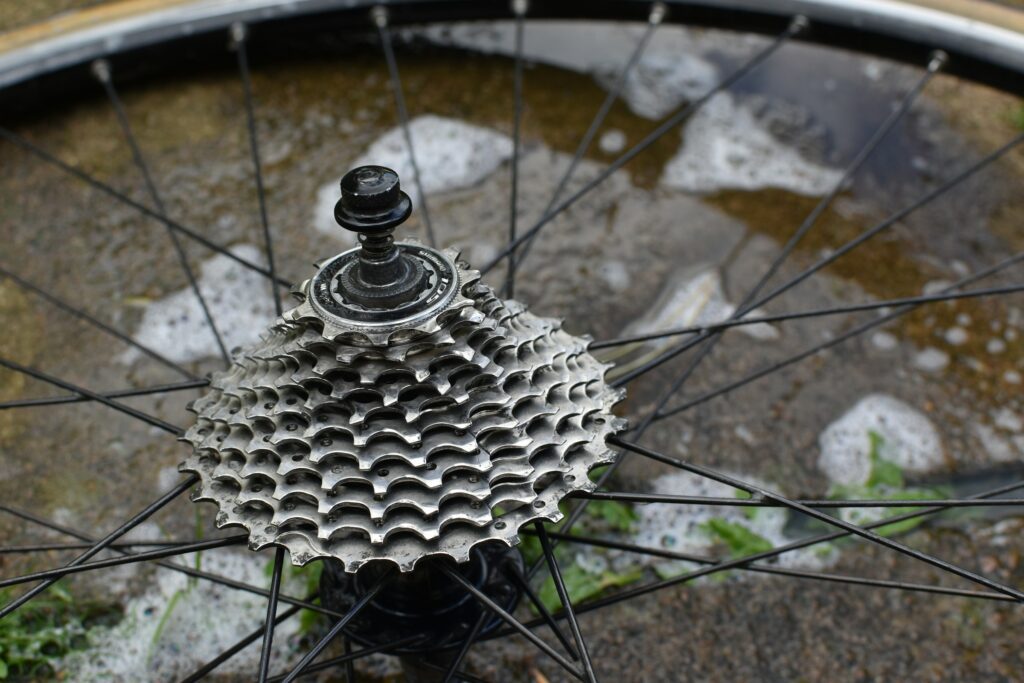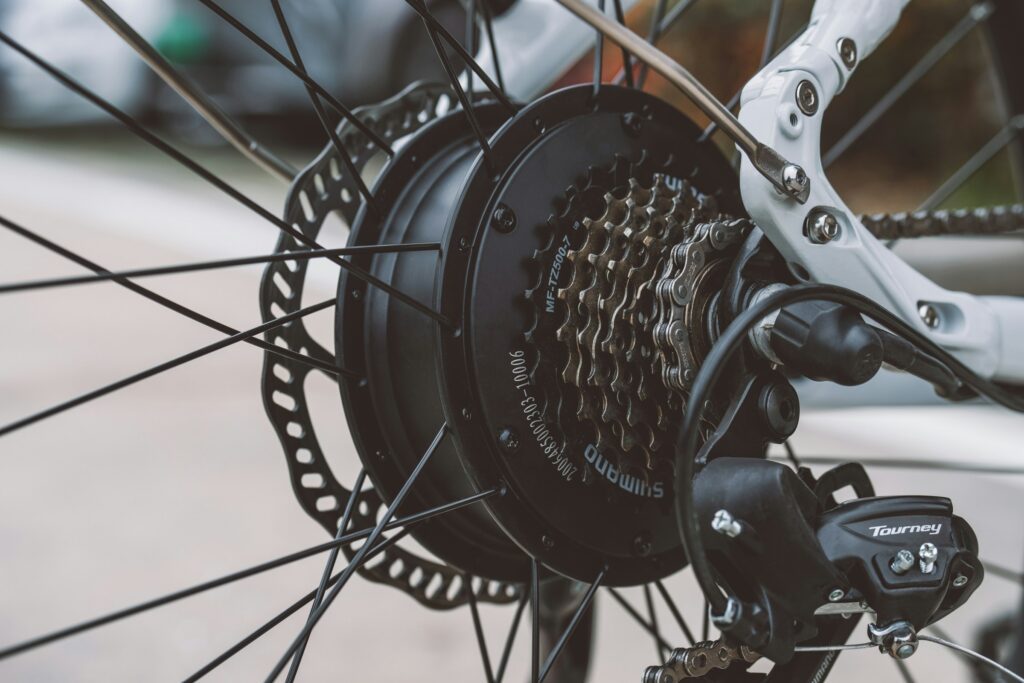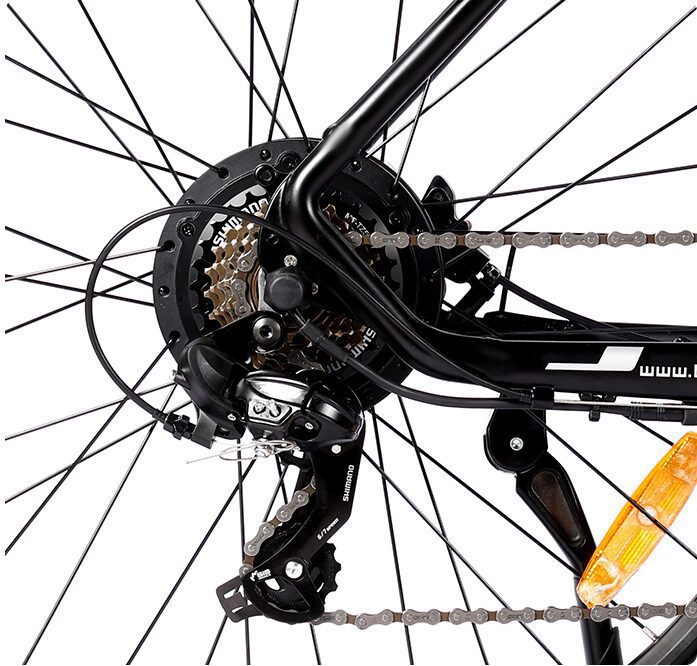Selecting the right bicycle gear mechanisms plays a role in ensuring an enjoyable cycling experience. The discussion surrounding freewheel versus cassette extends beyond jargon; it revolves around tailoring your bike to suit your individual riding preferences and requirements. Whether you are a serious cyclist or simply enjoy rides ,understanding this distinction holds significant value.
Let’s explore a detailed comparison of bicycle gears. We’ll guide you through the advantages and disadvantages of each choice. By the conclusion you’ll be equipped to select the gear for your cycling escapades.
Understanding Bicycle Gear Systems
In the realm of cycling understanding the types of bike drivetrains is crucial. Various drivetrains are designed to suit various riding conditions influencing your pedaling effort, speed and overall control on the road.
The Role of Gears in Cycling
Bicycle gears are crucial, when it comes to shaping your cycling journey. They enable cyclists to tune the pedaling effort, which’s key, for handling different terrains and matching riders’ abilities. Gear usage can make tough uphill climbs easier. It contributes to a safer downhill experience too.
Gears help convert your energy into efficient motion making it clear why comparing cycling components when choosing a bike is crucial.
Comparison of Bike Gear Types
There are three categories of bicycle gears which are single speed, multi speed and internally geared mechanisms. Each category is designed to cater to various cycling adventures.
-
- Single-speed: Best for flat areas and city rides where you don’t need to shift gears often. It’s simple and low maintenance.
-
- Multi-gear: Most road and mountain bikes use these. They let you change gears for different hills and speeds.
-
- Internally geared systems: These are on urban bikes. They’re easy to use and look clean since the gears are inside the rear wheel hub.
Deciding on the right gear type relies on your preferences, riding style and riding location. For instance, internally geared hubs suit city cyclists well, for their simplicity and cleanliness. On the other hand, multi gear systems are preferable for off road adventures and extended rides as they provide enhanced versatility and performance.
Various varieties of bicycle gears come with their own advantages. Recognizing these perks can enrich your biking adventures, helping you choose the gear, for improving your cycling journeys.
History and Evolution of Bike Drivetrains
The tale of the history of bicycle equipment is rich in innovation and technological advancements. It reflects the development of bicycle gear over time ,showcasing how advancements in cycling gear have enhanced the effectiveness and adaptability of bicycles.
From Fixed-Gear to Freewheel: A Journey
Bicycles originally had a simple fixed gear setup meaning the pedals and wheel moved together. The invention of the freewheel system changed cycling by allowing the wheel to spin independently letting riders coast easily.
Emergence of the Cassette System
The introduction of the cassette system marked an advancement that made gear changes smoother ,enhancing the cycling experience for riders in general.
The shift began in the second part of the 20th century. Cyclists sought better performance from their bicycles during competitive events. The cassette emerged as a key component, for professional riders and cycling enthusiasts alike.
| Component | Freewheel | Cassette |
| Year Introduced | Early 1900s | Late 20th Century |
| Benefit | Enabled coasting | Speedier gear changes, more gear options |
| Primary Use | General cycling | Racing and high-performance biking |
Freewheel vs Cassette: A Detailed Comparison
Understanding the distinction between freewheels and cassettes is essential for cycling enthusiasts seeking to enhance their bikes capabilities. These components play a role in the bikes gear mechanism, influencing cyclists riding experience and the upkeep of their bicycles. Let us delve into comparing freewheels and cassette ,shedding light on their characteristics and how they perform in cycling scenarios.
The distinction between freewheel and cassette lies primarily in their structure and installation on the bicycle. A freewheel integrates gears with a ratcheting system located on the wheel hub. Conversely a cassette comprises a series of sprockets positioned on the wheel, fitting onto a “freehub” body and securing in position using a lockring.
| Feature | Freewheel | Cassette |
| Installation | Screws onto the hub | Slides onto freehub and is secured by a lockring |
| Maintenance | Easier to replace | Easier to clean and maintain while attached |
| Gear Shifting | Less smooth, greater wear on drivetrain | More precise and smoother shifting |
| Durability | Lower due to integrated ratchet mechanism | Higher as ratchet mechanism is in the hub |
| Compatibility | Older and entry-level bikes | Current standard, compatible with most modern bikes |
When it comes to choosing between a freewheel and a cassette the advantages and disadvantages vary based on the cyclists requirements. Freewheels are more affordable and simpler to replace, making them ideal for novices or older bicycles. On the other hand cassettes offer longevity and maintenance ease ,making them suitable for individuals engaged in intense or competitive cycling.
In conclusion, the comparison of freewheel and cassettes highlights how each system is tailored to different types of bikes and riding preferences. Whether you’re riding for leisure or competing ,understanding that their differences are can significantly impact your cycling enjoyment and equipment selection.

The Mechanical Difference Between Freewheel and Cassette
When delving into the technical aspects of freewheel and cassette systems significant variations in their design become apparent. These distinctions have an impact on the functionality of the bicycle. Understanding these disparities is crucial, for both cyclists and mechanics when examining bike components and discerning between freewheel and cassette systems.
Focusing on the Hub
The discussion about freewheel versus cassette hubs revolves around how they combine the hub and gears. Freewheels contain the ratchet mechanism within the gear cluster while cassette systems feature a “freehub” body that remains attached to the hub. Gears are mounted onto this body and secured by a lockring. This fundamental distinction impacts upkeep, compatibility and the overall performance of the bicycle.
Analyzing Gear Ratios and Connectivity
Different gear ratios in freewheel and cassette systems can affect your cycling performance. Freewheels typically have gears with differences between them ,while cassettes provide more gears and smoother transitions ,making them ideal for racing or challenging terrain. Additionally ,the efficiency and suitability of these systems for cycling styles and conditions can be observed in how power’s transferred from the pedals to the wheels.
| Feature | Freewheel | Cassette |
| Number of Gears | Usually fewer | More, allowing close-ratio gears |
| Installation | Screws onto hub | Slides onto freehub and secured with lockring |
| Maintenance | Generally higher due to wear on hub threads | Easier, as freehub can be replaced separately |
| Suitability for Terrain | Better for flat or moderate terrains | Preferred for varied and challenging terrains |
| Power Transmission | Less efficient | More direct and robust |
Examining Freewheel Cassette Compatibility
Understanding the distinction between freewheel and cassette compatibility is crucial for cyclists considering bike upgrades. This section delves into how these components interact ,highlighting their compatibility and upgrade possibilities. It’s an vital aspect to consider for individuals contemplating modifications, to make their bike setup different.
Both freewheel and cassette systems play a role in rotating the wheel through their connection to the chain. However, they vary in compatibility with hubs and components when it comes to replacement or enhancement. Having a grasp of these distinctions can lead to cost savings and enhanced functionality, for individuals considering modifications or additions.
| Component | Freewheel System | Cassette System |
| Hub Compatibility | Threads onto the hub | Slips onto a freehub body |
| Installation | Requires special tools for removal | Easier to swap with common tools |
| Upgrade Flexibility | Limited by hub and gear options | Wider range of gear ratios available |
Switching from a freewheel to a cassette system needs consideration. The compatibility between the two isn’t always simple. You might have to buy a new hub or an adapter impacting both the expense and the convenience of transitioning.
Cyclists must comprehend the collaboration of components in a bicycle drivetrain. Understanding the interaction between freewheels and cassettes is essential ,when selecting parts to ensure that your bikes gears function smoothly and effectively.
Pros and Cons of Freewheel and Cassette Systems
When choosing between freewheel and cassette systems it can affect how you experience your ride ,the longevity of the components and the upkeep needed. Both options have their pros and cons that cyclists need to think about when setting up their bikes for different riding styles or terrains. It definitely influences how well you perform on your bike.
Evaluating Freewheel vs Cassette Weight and Performance
When comparing the performance of freewheels and cassettes, it’s evident how they impact your cycling experience. Freewheels, known for their lighter design, contribute to speed and efficiency. On the other hand cassettes offer versatility and seamless shifting particularly when navigating challenging terrains.
Durability and Maintenance Considerations
Cassettes have a longer lifespan compared to freewheels, because of their durability and even wear. Additionally they are simpler to upkeep as you can swap out cogs. This makes cassettes a preferred option for cyclists seeking convenience and cost effectiveness, in the long run in particular.
| Feature | Freewheel | Cassette |
| Weight | Lighter | Heavier |
| Gear Shifting | Basic | Smooth and Versatile |
| Durability | Less Durable | More Durable |
| Maintenance Ease | More complex | Simpler, cost-effective |
When deciding between a gear cassette and a freewheel consider your preferences and requirements. Opt for a freewheel if you prefer something uncomplicated. For lasting performance and easy upkeep a cassette is the choice. Both options hold their place in the realm of cycling.

Freewheel vs Cassette: Which Is Better for Road Bikes?
When choosing between a freewheel or a cassette for your bike ,you need to think about several factors. Each system has its pros and cons ,when it comes to speed, performance and comfort. All of them play a role ,in influencing your cycling journey.
Speed and Efficiency in Road Cycling
When it comes to road cycling ,having gear that responds well and is efficient is crucial. Many cyclists prefer using cassettes, because of their shifting and effectiveness at speeds ,making them ideal for tackling different types of terrain during races or long rides. On the other hand freewheels, while not as efficient as cassettes, are an option for casual riders or beginners seeking simplicity and cost savings.
Freewheel vs Cassette Noise Levels During Riding
Cyclists often concern themselves with the sounds their gear produces during rides. In the debate between freewheel and cassette noise levels, cassettes typically come out as the quieter option. This is a development for cyclists embarking on long journeys as reduced noise contributes to a more enjoyable ride.
| Feature | Freewheel | Cassette |
| Speed & Efficiency | Good for beginners, less efficient at higher speeds | Excellent for high-speed cycling, better shifting |
| Installation | Easier and generally cheaper | Requires more precise setup |
| Noise Level | Noticeably louder | Quieter, beneficial for long rides |
| Recommended Use | Recreational, beginner biking | Competitive, advanced road cycling |

Conclusion
We have thoroughly examined the distinctions between freewheel and cassette systems. Our analysis reveals that cassettes provide flexibility and are simpler to swap out. Conversely ,freewheels boast a design that appeals to certain cyclists seeking effortless maintenance.
When deciding between a freewheel and a cassette it all comes down to your cycling preferences and priorities. Road cyclists tend to lean towards cassettes for their speed and seamless gear changes. On the other hand casual riders or vintage bike enthusiasts may find freewheels more appealing.
In the end your choice should be based on what you require from your bicycle. Consider aspects that’re important to you, for example how easy it’s to repair ,its weight or its performance. Refer to the comparisons we have provided to select the cycling parts for your specific requirements. Bodywel provides freewheel, and you can buy it on our online shop if you prefer it.
FAQ
What are the main differences between a freewheel and a cassette?
A freewheel is a single piece that includes the cogs and the ratcheting mechanism for coasting. It screws directly onto the hub. A cassette, however, is a set of cogs that slides onto a “freehub” with the ratcheting mechanism inside. It’s secured with a lockring. This design allows for more gears and easier maintenance.
Can I upgrade from a freewheel to a cassette system?
Upgrading from a freewheel to a cassette system is possible but requires changing the rear wheel hub or the whole rear wheel. This is because the freehub body for a cassette is different from a hub for a freewheel.
What are the pros and cons of a freewheel system?
Freewheel systems are simpler and often found on older or lower-end bikes. They’re more economical and easy to install. But, they’re less durable than cassette systems, offer fewer gears, and are hard to remove for maintenance or replacement.
What are the pros and cons of a cassette system?
Cassette systems are common on newer and higher-end bikes. They offer a wide gear range for better climbing and speed. They’re also more durable and easy to maintain. But, they can be more expensive and need a special tool for installation or removal.
Is a freewheel or cassette better for road cycling?
For road cycling, especially at competitive levels, a cassette system is better. It provides a wide gear range, better shifting, and durability needed for road cycling. Plus, cassette systems can be tuned for optimal performance, which serious road cyclists prefer.
Do freewheel and cassette systems have different maintenance requirements?
Yes, they do. Cassette systems are easier to maintain because you can remove cogs for cleaning or replacement. Freewheel systems need special tools to remove the whole unit, making maintenance harder.
Are freewheel and cassette systems interchangeable?
Freewheel and cassette systems aren’t directly interchangeable due to different hub designs. But, you can switch systems by replacing the rear hub or the whole rear wheel with the right equipment.
Does the weight of a freewheel or cassette matter?
Weight matters for cyclists, especially racers or climbers. Cassette systems are usually lighter than freewheels due to modern materials and design. But, the weight difference is small and might not be noticeable to casual riders.


